Ingredients
 A computer |
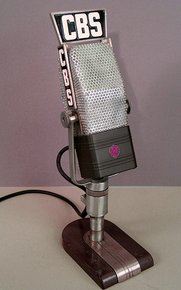 A microphone |
||
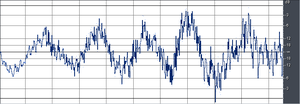 Some audio editing software eg. the free, open source |
Instructions
If you haven't already got some, download and install some audio editing sofware. You want something with which you can look closely at a sound wave.
Plug your microphone into your computer's microphone socket.
Start recording, and then clap your hands. Have a go at clapping your hands in different ways; try with flat hands to make a high pitch noise and with cupped hands to make a lower one.
停止recording and zoom into the claps, and see if you can see any structure.
Result
You should be able to see various extra lumps in the waveform after the hand clap. These are reflections from walls etc. in your room.
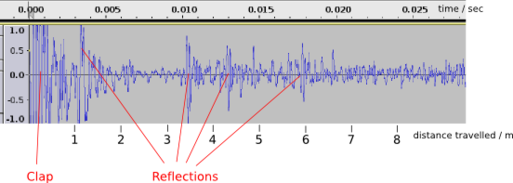
The first noise you can see is the clap, and after this you get various reflections from different objects in the room.
Higher pitch Clap:If it is slowed down by a factor of 16, you can hear the echoes:
You will probably find that it is a lot harder to pick out any information from the low pitched clap, than the high one.
Explanation
When you clap your hands, you shake the air, and produce vibrations that travel outwards at the speed of sound (330m/s).
 |
 |
| When you clap your hands, you vibrate the air. | This disturbance travels outwards in all directions at the speed of sound. |
If the sound waves it any object they will bounce off it creating an echo which will travel back at the speed of sound.
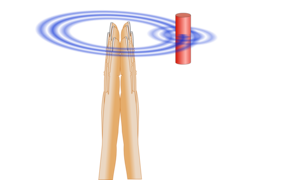 |
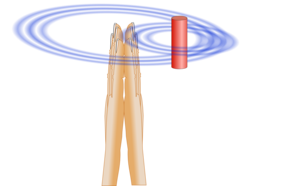 |
| When the sound hits an object, it bounces off | Eventually this reflected sound gets back to you, and you hear it as an echo. |
As the speed of sound in air is roughly constant, you can work out how far the sound has travelled for each reflection, and start to work out what the echoes refer to in the room. If you had a very directional microphone you could even build up a picture of their directions as well, at which point you have a sonar.
Why is it harder to see echoes from a low pitched clap?
Sound waves of a lower pitch vibrate more slowly and so have a longer wavelength. A pulse of sound must be at least a wavelength long (in practice your clap will be a lot longer than this). So all the echos will tend to overlap each other, as well as the original pulse. This makes it very hard to distinguish between them. Therefore, if you want to be able to detect fine detail, you have to use high frequency sounds. This effect is enhanced if you are working with water, where sound travels at about 1000m/s, (far faster than in air), so you need to use very high frequencies to detect objects in this way. The human body contains a lot of water, and so ultrasound imaging in your body uses this principle, using frequencies of several megahertz.
- PreviousRoot vegetable cannon - DIY potato gun
- NextDark Flames







Comments
This was very helpful
This was very helpful
i love this
i love this
Add a comment